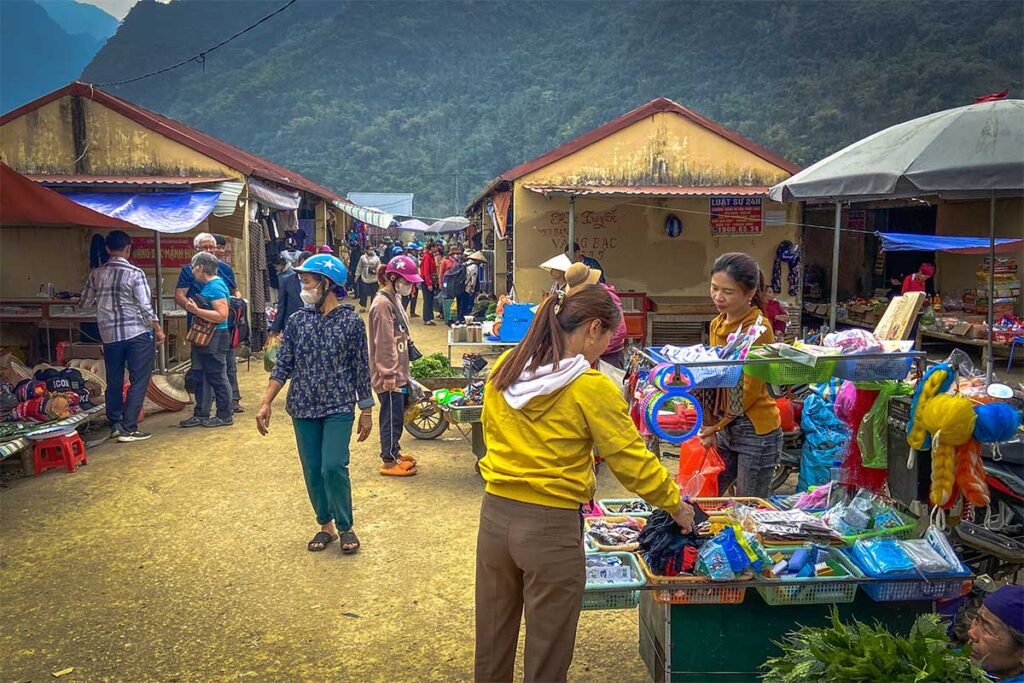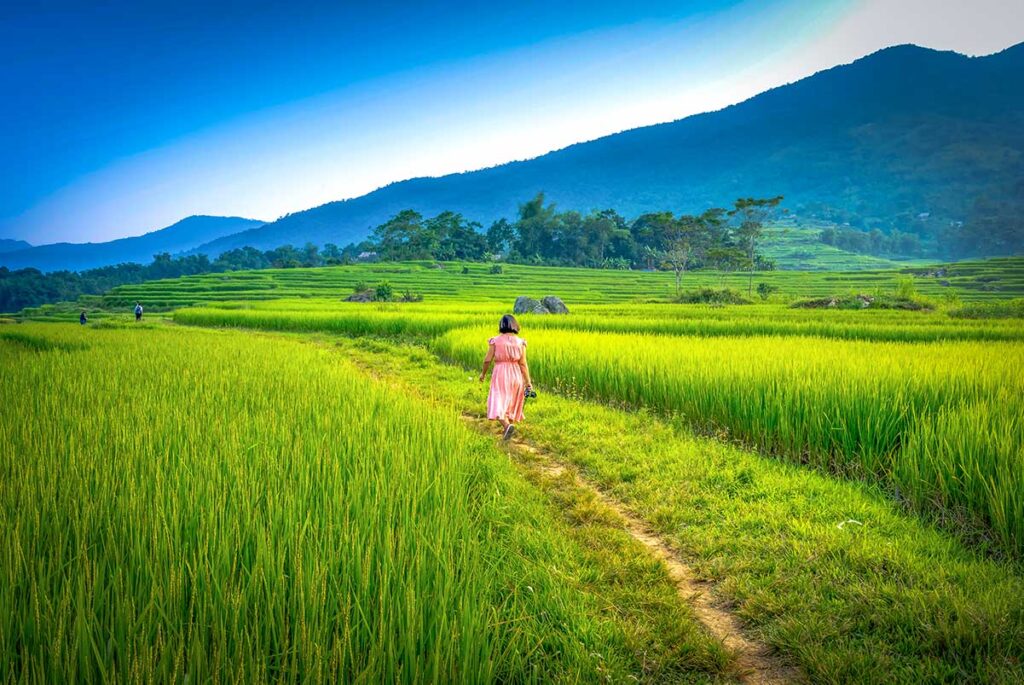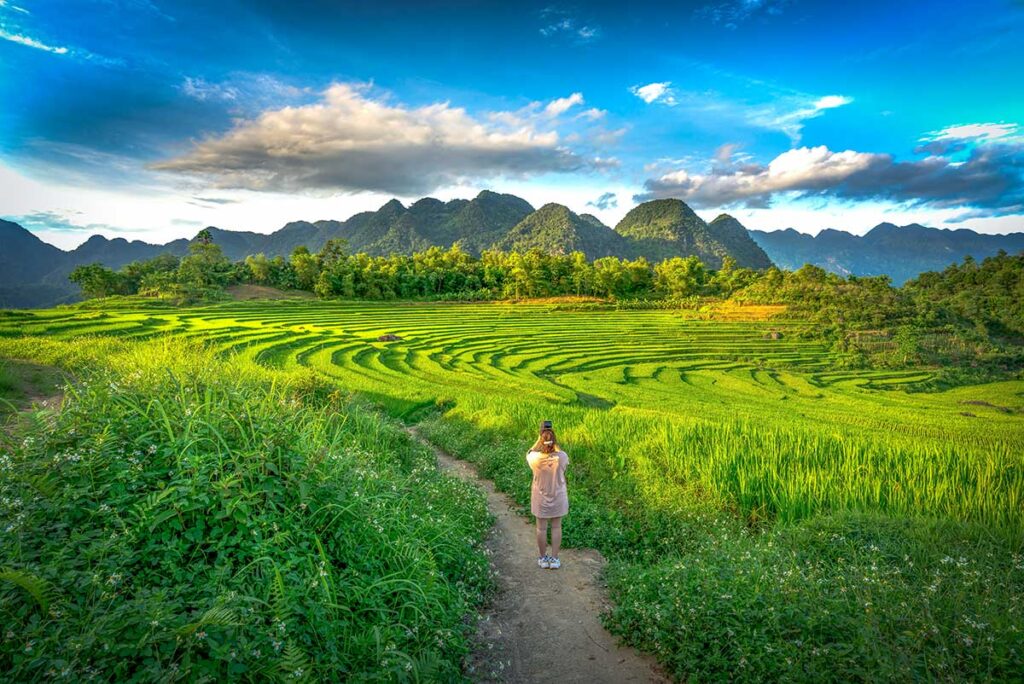What is Pho Doan Market like?
A rural market tradition
Pho Doan is the main town in Pu Luong, though it’s still small and quiet outside of market days. Like in many remote areas of northern Vietnam, weekly markets play a central role in community life. People from surrounding villages walk or ride in early to sell goods, buy essentials, and connect with others.
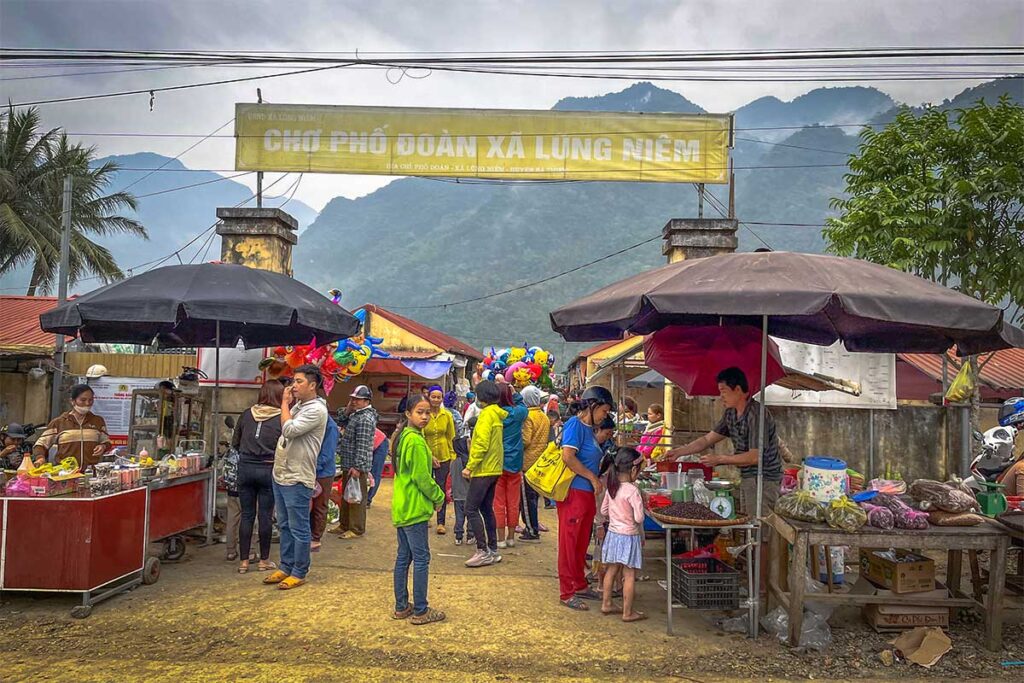
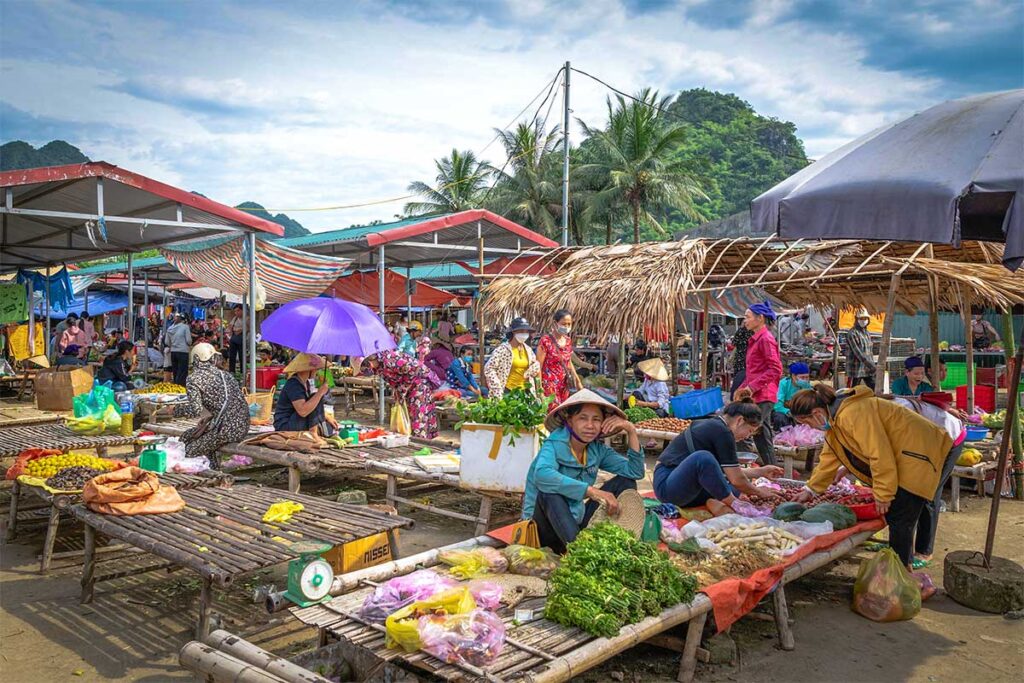
A weekly gathering for locals
Locals bring everything from fresh vegetables and forest herbs to meat, handmade tools, clothing, and even livestock. It’s not just about selling — many come to stock up on basics like cooking oil, farming gear, or household items they can’t get in their village. And for many, it’s also a chance to meet friends, share local news, have a bite to eat, or enjoy a cup of rice wine.
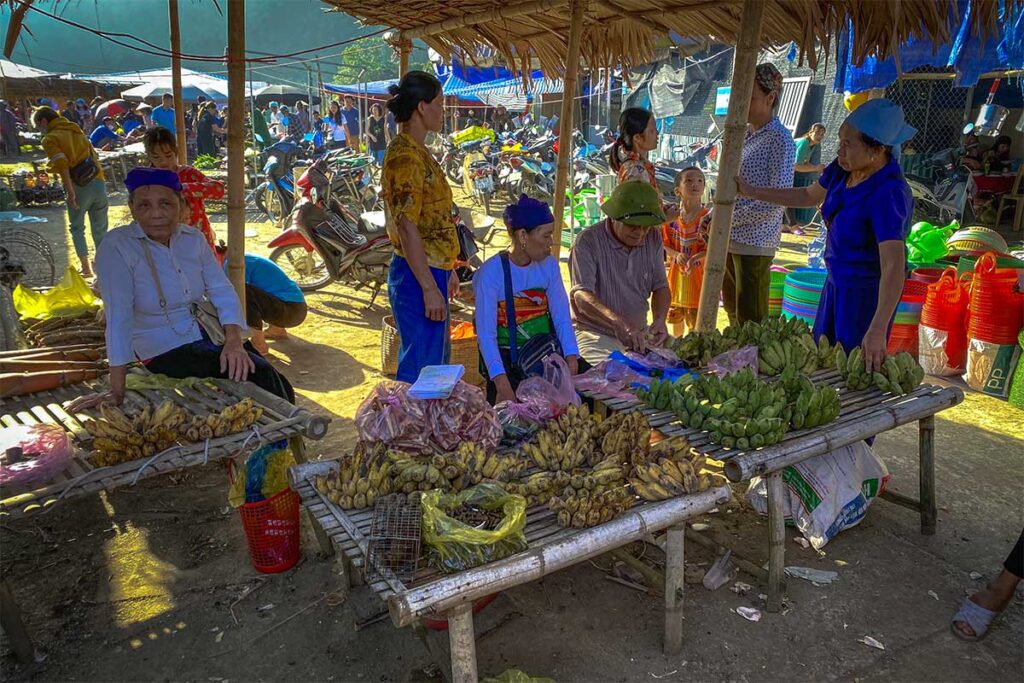
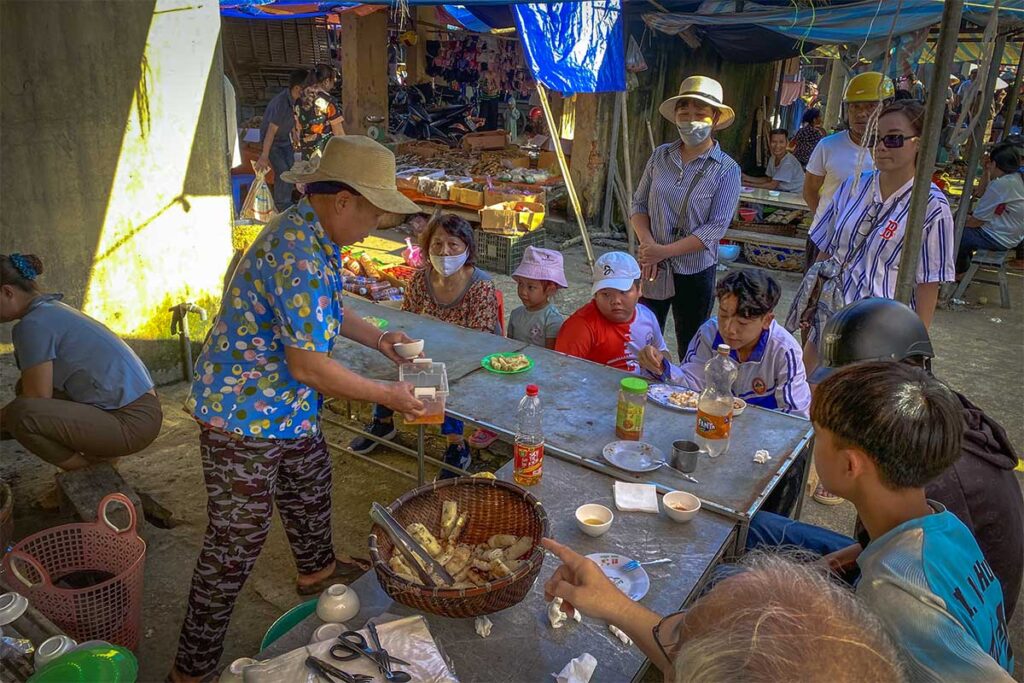
The atmosphere
The market is friendly and bustling in the early hours, especially around 6:00 to 9:00 AM. You’ll see mostly Thai and Muong people, many of them in traditional clothing, chatting, laughing, and going about their day. It’s not a staged or curated experience — the market is raw, unpolished, and completely local, which is exactly what makes it worth visiting.

When is Pho Doan Market?
Market days
Pho Doan Market takes place twice a week, on Thursday and Sunday mornings. It starts early, with locals arriving as early as 5:30–6:00 AM to set up stalls or do their shopping before the heat sets in. By around 9:30 or 10:00 AM, many vendors begin packing up, and the energy starts to fade.
Best time to visit
If you want to see the market at its busiest and most vibrant, plan to arrive before 9:00 AM. That’s when the full range of goods is available, and the atmosphere is most active — from bartering and chatting to street food cooking and families gathering.
Where is the Market and How to get there?
Location: Pho Doan Town
The market takes place in Pho Doan, the main town in the Pu Luong area. Despite being the local center, it’s still just a small settlement with a few shops and local houses. There’s no real reason to stay overnight here — it’s best to base yourself in one of the nearby homestays or lodges in villages like Don or Ban Cong. If you’re not in Pu Luong yet, check our separate guide on how to get to Pu Luong from Hanoi.
Tip: Also check our tours to Pu Luong, that include transfers from Hanoi, a visit to Pho Doan Market (if you book on the market day), trekking through terraced rice fields, bamboo rafting and overnight stays in comfortable lodges overlooking the countryside:
Getting there from your accommodation
- Private transfer from your lodge:
Some eco-lodges offer early morning transfers to the market — often by shared van or as part of a larger day tour. Ask your reception in advance, as these trips usually leave before breakfast and may require a seat reservation. - Back of a motorbike:
If you’re staying in a local homestay, chances are your host doesn’t have a car — but will be happy to take you to the market on the back of their motorbike for a small fee. It’s a common and practical way to get around in Pu Luong. - Drive yourself (motorbike):
Confident riders can easily get there on their own — just follow Google Maps to “Chợ Phố Đoàn.” Roads are paved but can be steep and slippery in parts, especially after rain. There’s basic motorbike parking near the market entrance (expect to pay a small fee, usually 5,000 VND).
Tips for visiting Pho Doan Market
Not a tourist market
Pho Doan is a real working market — not set up for tourists. Most goods are for local use: baskets of vegetables, bundles of wild herbs, fresh meat laid out on tables, basic tools, or even live ducklings.
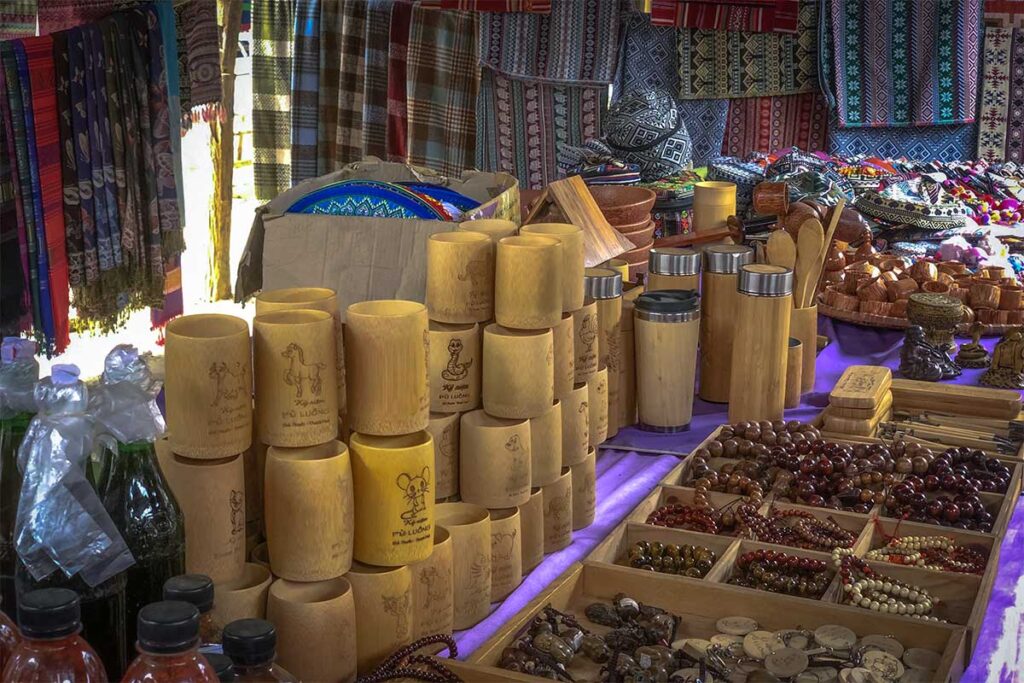
You might come across handmade textiles or bamboo crafts, but souvenir shopping isn’t the focus here. It’s a great place to observe daily life, but be aware that some sections (like the meat stalls) may be confronting if you’re not used to it.
Combine with Hieu Waterfall

If you’re heading to Hieu Waterfall, Pho Doan is already on the way. Visiting the market in the early morning and then continuing to the waterfall makes for an easy and rewarding day trip. The hike to the falls pairs nicely with a local breakfast or snack picked up at the market.
Cultural etiquette
Dress modestly — it doesn’t need to be formal, but avoid things like swimwear or overly revealing clothing. Many locals dress in beautiful traditional outfits, especially the Thai and Muong women. If you’d like to take a photo, always ask first — especially for close-up portraits. Be respectful around the livestock or meat sections and avoid treating them as a spectacle.
Food and snacks
You’ll find plenty of fresh and simple snacks here. Sticky rice, grilled pork skewers, sugarcane juice, and seasonal fruits are all common. If you’re more adventurous, you might spot local specialties like insects or mountain herbs. Either way, it’s a fun place to try something new — just make sure to bring small bills (10,000–50,000 VND) as most vendors won’t have change for larger notes.
Final thoughts — Is it worth visiting?
If you’re in Pu Luong on a market day, Pho Doan Market is absolutely worth a visit. It’s not a destination to plan your entire trip around, and it’s definitely smaller than more famous ethnic markets like Bac Ha near Sapa. But that’s also part of its charm — it’s quieter, more intimate, and focused entirely on local life.
For travelers interested in culture, photography, or simply observing how people in the mountains live, it’s one of the most authentic experiences in Pu Luong. Just go early, be respectful, and approach it as a cultural stop — not a tourist attraction.
